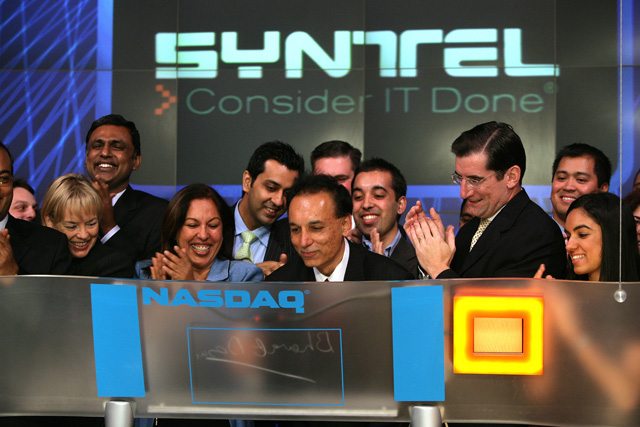
These Global Warriors share with you their secrets for success in hard times…
[dropcap]R[/dropcap]isk. A scary word, especially in these scary economic times. Yet there is an elite band of super-successful global entrepreneurs and change makers who have always thrived on this four-letter word, battling uncertain times and uncharted waters to set up world class companies, challenge old worlds and create new ones.
Meet Bharat Desai, Chairman and CEO of Syntel, a global provider of information technology headquartered in Troy, Michigan, which today employs 12000 people and has a market capitalization in excess of $ 1 billion. Forbes listed Desai among the 400 richest Americans.
Then there’s Ramesh Vangal, an intrepid serial entrepreneur from New York who seems to start companies as nonchalantly as if they were game pieces on a Monopoly board. He is the man who first took PepsiCo to India, and is now the founder of Katra Group, a 500 million dollar global company headquartered in Bangalore, India.
Kasim Mookhtiar had earlier pioneered diabetes and obesity programs at Bristol-Myers Squibb in the US. He then jumped continents and is now Chief Scientific Officer and business head, Drug Discovery at Advinus Therapeutics, a TATA Enterprise in India, exulting in “a chance to be part of the birthing of a new industry in India that has the potential to be even bigger than IT.”
These are just some of the Bombay Boys – US alumni of IIT Bombay which recently celebrated its 50th golden jubilee anniversary in New York, and whose graduates have fanned out across India and the globe, impacting many fields. The list of alumni reads like a who’s who of the business world, and includes Nandan M. Nilekani, Co-Chairman of Infosys Technologies, Jairam Ramesh, Minister of State for Commerce and Power, as well as Victor Menezes, the recently retired Vice Chairman of Citigroup Inc.
[dropcap]T[/dropcap]hey all started years ago by overcoming that first initial hurdle – getting admission into this prestigious university. The Indian Institutes of Technology were the creation of Pandit Jawaharlal Nehru in newly independent India and they have been a catalyst for gathering some of the best minds in the country. There are IITs in Kharagpur, Chennai, Kanpur, Delhi, Guwahati, Rourkee and Bombay, which is one of most desired by the applicants. Lakhs of students apply every year but only the top one percent get into this magic circle.
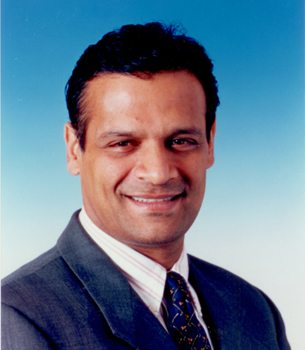
[dropcap]R[/dropcap]amesh Vangal, who led PepsiCo’s entry into India in turbulent times and has been a serial global entrepreneur since, emphasizes: “You had to work extremely hard and then you had to be basically smart. – there’s no question about it. And it was immaterial where you came from, what you looked like, what you did. Only one thing counted – the quality of the brain. That’s why you got a very eclectic collection of people from diverse monetary, ethnic and social backgrounds – it was amazing.”
Indeed, the institution seems to give its graduates something much more than the core curriculum – it’s an ability to take risks, to go out on a limb and try something totally new.
“Campus life at IIT Bombay was so varied and so full that we could discover
our own unique strengths and develop our own distinctive personal and professional selves, which then boosted and propelled us to success in life,” says Pradeep Anand, founder of Seeta Resources, a global energy consultancy firm: “That power of self that IIT Bombay creates in each of its graduates is inimitable.”
Anand, who is chairman emeritus of IIT Alumni of Greater Houston (IITAGH), estimates that globally there are about 150,000 IIT alumni; about 50,000 of whom are in North America, and about 10, 000 of these are from IIT Bombay.
Once they graduated, each of the Bombay Boys went into diverse fields. Many have joined major corporations while still others have turned entrepreneur, creating scores of companies, generating jobs and impacting many industries in both countries.
Here prominent movers and shakers share their journey with us and the lessons they learnt along the way. They came from different parts of the country but each brought qualities of leadership and persistence, which were further nurtured at IIT.
[dropcap]T[/dropcap]oday Bharat Desai heads Syntel, a company with 1. 5 billion market capitalization but he recalls the humble origins of his family, with his father working in an assembly line at a factory in Ahmedabad at the age of 12. The family migrated to Mombassa but when political trouble brewed, they had to return to India on the SS Aressa, sent by the Indian Government to bring back its nationals. Bharat Desai was 11 years old at that time, and remembers the family opening up their bedding and sleeping in the hold of this crowded cargo ship.
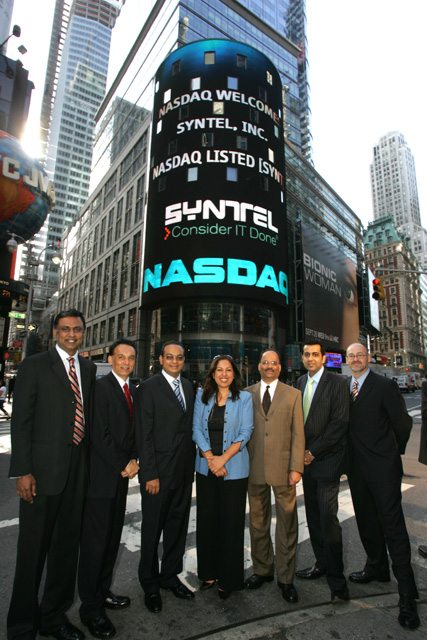
[dropcap]S[/dropcap]ince his father was still in Mombassa, winding up things, Bharat became the male head of the family at 11, and one of his tasks was to bike to a regional market to buy the daily groceries. He recalls, “I was given Rs. 2 by my mom and my personal challenge was ‘How do I do it for one rupee?’ and proudly gave her a rupee back every day. If you think about it, it was phenomenally strong training.”
At 13, he got not only himself but also his younger brother into St. Xavier’s School by sheer persistence, even though no seats were available. He simply turned up at the school again and again, until the good fathers, noting his great scores and his doggedness, relented. Taking things into his own hands was a childhood trait, and so IIT was a natural fit.
For Ramesh Vangal, who was born in Chennai in a middle class family and lived in Ghana when his father was a government worker there, the exposure to different cultures began early, as did his love affair with entrepreneurship. While at IIT, he coveted a motorbike and to fund that purchase, he became a driver, ferrying new jeeps from Bombay to Bangalore.
“I was 19 years old and I used to get 15 paisa per kilometer – one rupee for every seven kilometers,” he recalls. “That was my seed capital and it was the beginning of one of the first acquisitions I made. It was a ten year old Aawa and I bought it for 1500 rupees – it was fun and the highlight of a lot of my life.”
While at IIT, he also learned first hand about the adverse consequences of venturing into a business when he and another student sold tee-shirts on campus – and the color ran. Recalls Vangal with a laugh: “This was our first attempt at crisis management – the customers were baying for our blood!”
Vangal, who went from IIT to the London School of Business, got his first job in the entrepreneurial wing of Proctor & Gamble in Geneva as a marketing assistant and learnt a lot about working in the real world. He recalls an Arab distributor in the Middle East scornfully asking his boss what could an Indian worker do for him – they were the ABC of life – ayah, bearer and cook! Working in marketing, he realized you didn’t have the protection of an engineering degree or other cerebral based professions; marketing is very nebulous, a mix of many skills – and getting along well with people within a business framework is crucial. Establishing oneself as an entrepreneur is a tough sell and he learnt it on the job.
While working with PepsiCo in New York, he got the opportunity to take the company to India in 1990. Those were very different times; India’s was still a closed economy with the total direct investment being just $ 30 million. Vangal and his colleagues had to be inventive in forging a deal with the Indian Government. In fact, it was a landmark project on many counts – the Pepsi beverage became just one part of the equation with agricultural processing and food exports becoming crucial to the Pepsi success story.These generated thousands of articles in the media, and Harvard Business School even did a case study on it.
The other challenge was getting Pepsi-Cola accepted as an Indian drink, and Vangal and his team were one of the first to use the hybridized concept of Hinglish in bubbly, creative campaigns which introduced the Pepsi definition of fun into India. Says Vangal, “I think Pepsi took some risks and we were largely leading the charge but today brand Pepsi outsells brand Coke about two to one in India.”
Vangal who was managing director of PepsiCo in India then headed PepsiCo’s food business in Asia. He later joined Seagram in an unusual deal where he was junior partner with equity in the India business, and also became chairman of Seagram for Asia. It gave him the opportunity to be entrepreneurial within a larger framework, and the company actually tripled its profits before it was sold off.
With his capital from this sale, Vangal went full steam ahead as serial entrepreneur and started a series of businesses under the Katra Group umbrella, which today embraces everything from IT and the agri-business to real estate and financial services to the wellness and hospitality industries.
For Bharat Desai, entrepreneurship happened almost a decade earlier. After working with Tata Consultancy Services for 3 years, he came to the US for his MBA at Michigan. He and his wife Neerja Sethi, who had specialized in computer science, saw a dawning trend and wanted to capitalize on it: information technology services. Their company Syntel had to go through birth pangs and growing pains because IT professional services were a pretty new concept at that time. The further transformation from a local to a global company was extremely tough.
[dropcap]W[/dropcap]hat were the challenges?
“Well, we had no money, we had no contacts, and we had no employees working for us at that time,” says Desai. “So we had to worry about many things – we had to worry about making enough money to pay the bills and we had to also worry about growing the company, and finding customers, finding employees. At that time it was very difficult, if not impossible to get any kind of capital for a venture like that.”
Having a completely boot-strapped operation, the couple took their personal savings and started the company from that, with no infusion of outside capital, and grew the company from there. “It was difficult to land customers, it was difficult to establish because we had no track record,” recalls Desai of the company which finally grew to employ 12,000 people and partner over a hundred of the best global brands.
“You have to build on that one brick at a time. It was fun doing it,” says Desai. “To me, the realization came very early that the future of our industry was globalization and once I got that realization, I firmly believed in it and made the changes. The transformation from a local to a global company was extremely difficult. I walked the talk because I realized that was our only chance; that is what we needed to do and that is where all the exciting business opportunities were.”
[dropcap]W[/dropcap]hile Desai and Vangal have moved far from their engineering roots, Kasim Mookhtiar of Pennsylvania is one who has taken his chemical engineering education to its conclusion. Born in Bombay, he attended Barnes School in Deolali. He says, “My passion for chemistry was born in that lab when Mr. Emmanuel, our new chemistry teacher, demonstrated some really neat chemistry experiments to us eight standard kids. I thought it was the coolest thing so I got my dad to get me a chemistry set during the holidays. My passion for chemistry and science has remained unabated since that day in 1969!”
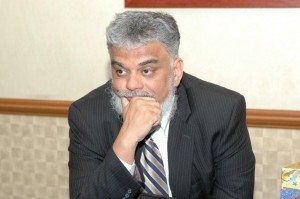 Mookhtiar, who studied at St. Xavier’s College, went on to the master’s program in chemistry at IIT and then obtained his PhD at Florida State University. After a postdoctoral stint at Yale University School of Medicine, he joined the Metabolic Diseases Drug Discovery Department at Bristol-Myers Squibb, relishing the innovative intensive work which was focused on vigorous science.
Mookhtiar, who studied at St. Xavier’s College, went on to the master’s program in chemistry at IIT and then obtained his PhD at Florida State University. After a postdoctoral stint at Yale University School of Medicine, he joined the Metabolic Diseases Drug Discovery Department at Bristol-Myers Squibb, relishing the innovative intensive work which was focused on vigorous science.
Having created a comfortable life for himself and his family in the US, Mookhtiar suddenly had the opportunity to go to India to join a colleague, Dr. Rashmi Bharbhaiya, who was leaving BMS to head up the R&D organization of India’s largest pharma company, Ranbaxy, to initiate an innovative medicines effort.
“There was a huge opportunity for India to be a major player in the global pharmaceutical industry because of the major successes of the Indian industry in the generic drug space,” says Mookhtiar.
Why did he think it was so important to take the plunge into the unknown and go into uncharted territory?
“Essentially, there was an opportunity to make a difference, however small, to the growth of India on the global stage,” says Mookhtiar, who went on to head a team of 100 scientists at Ranbaxy Laboratories. “It was not just a better paying job, but a chance to be part of something big.”
[dropcap]W[/dropcap]hen Bharbhaiya later left Ranbaxy, Mookhtiar and a colleague, Sanjiv Kaul, joined him in forming a new company for innovative pharma. Since the idea came to them as they sat in a Bangalore coffee house, eating South Indian food, they tentatively called it Project Idli but later chose the name, ADVINUS, derived from ADVantage INdia USA. While they were in talks with various venture capital and private equity people, Tatas came forward to fund Adivinus Therapeutics.
Starting a new venture was not easy, for R and D is a very high risk, high reward activity, as well as being time-consuming and expensive. “The norm in this is failure- remember most potential drugs (greater than 95%) that go into human testing never make it to the market,” cautions Mookhtiar. “On the average it takes about 10 years for an idea to reach the market. This coupled with the failure rate makes it difficult to find the risk takers on the financial support.”
He adds, “The challenge we had was to control our burn rate or the cost of doing drug discovery and coming up with a balanced, realistic business plan that had a better chance to succeed than other people’s plans. Then we had to build a team of scientists with the passion and talent to do the research. Finally, we had to build the infrastructure and put all the processes in place that would allow our bright scientists to carry out their work. I am glad to say that we made it!”
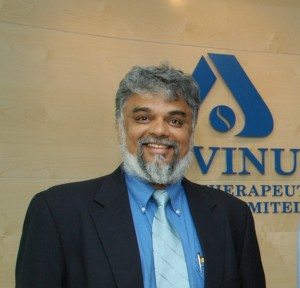 He points out that India is fast becoming a global player in the innovative pharma world even though earlier all the major medicines were developed in the West and Japan. “Since disease burden and health care concerns are global in nature, new medicines coming from India will find their place in the global market,” he says. “However, for the high rewards, the medicines must be innovative – better and safer – than ever before.”
He points out that India is fast becoming a global player in the innovative pharma world even though earlier all the major medicines were developed in the West and Japan. “Since disease burden and health care concerns are global in nature, new medicines coming from India will find their place in the global market,” he says. “However, for the high rewards, the medicines must be innovative – better and safer – than ever before.”
Indeed, globalization is the new mantra, and is being embraced by entrepreneurs. As Vangal points out there is a range of opportunities in India and the idea is to bring strategic partners in various businesses, giving concessions in different sectors, allowing those with the expertise to participate. He says, “You have a California Gold Rush – there are incredible opportunities and it’s pioneering like the Wild West was in the 1900’s in America.”
In the Katra Group, he says, they are building verticals, participating with strategic partners in creating bridges which connect the Indian arbitrage with the outside world: “We are not the only bridge – there are thousands of bridges but we want to be one of them.”
Which brings us to the question of risk: there’s an element of this in every innovative move – and yet some people freeze rather than take a risk. Says Bharat Desai: “To get to any great outcome you almost always have to bridge from the known to the unknown – there are always unknown factors and not every risk works out; you have to be smart in your assessment of the opportunity and believe strongly that you can actualize that opportunity but also be realistic enough to know when something is not working out.”
He believes there’s virtue even in failure. “You learn much more through failure than through successes. You have to be a failure as a stepping stone to success, because it’s the way you can learn and course-correct. In every successful field of endeavor you have that.”
So what is the real value of an IIT Bombay education?
“IIT teaches you irreverence – teaches you to think differently – that’s the key,” says Vangal. “If you think differently you can be different; and if you can think it, you can do it.”
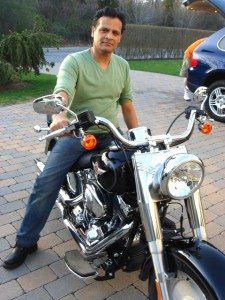
[dropcap]R[/dropcap]amesh Vangal today has homes in Miami, New York and India – and maintains state of the art motorbikes in all these locations. Yet, as he admits, for him, the most exciting motorbike is still the rundown one he bought with his hard-earned money back in IIT- Bombay, in those golden days of finding one’s place in the world.
Since he grew into entrepreneurship on the job, Vangal says it continues to be a learning experience, sometimes a painful one. “You realize it’s a roller coaster ride – initially you’re scared but it’s a lot of fun.”
His advice to aspiring entrepreneurs? “Take life as it comes – live and do your best. After that, forget about it – life and the business of life take care of themselves.Life is not about winning and losing. Life is really about excitement and having some fun.”
Text© Lavina Melwani Photos(C) Respective photographers
THE POWER PLAYERS
[dropcap]T[/dropcap]he circle of change makers and serial entrepreneurs who all graduated from this university includes Dr. Arun N. Netravali, managing director of OmniCapital, who is a former President of Bell Labs and Chief Scientist for Lucent Technologies; Parag Saxena, CEO and founding partner of Vedanta Capital; Rakesh Mathur, co-founder of Webaroo, and one of the founders of Junglee, which was acquired by Amazon.com; and Hemant Kanakia, partner at Columbia Capital.
Amar Bhide, Lawrence B. Glaubinger Professor of Business, Columbia University, has a MBA and DBA from Harvard University and is one of the influential voices in the area of entrepreneurship. His articles in Harvard Business Review address the vital issues of strategy and governance, and his upcoming book is ‘The Venturesome Economy: How Innovation Sustains Prosperity in a More Connected World.’
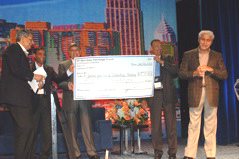
Other distinguished alumni include Dr. Bharat Balasubramanian of. Daimler AG; Ramani Ayer, CEO, Hartford Financial Services; Yogen Dalal, Managing Director of Mayfield Fund; Subrah Iyer, CEO of WebEx which recently merged with Cisco systems; Dr. Ajit Ranade, Group chief Economist and President of Aditya Birla Group, a $30 billion conglomerate. Then there’s Arjun Divecha who founded the emerging markets practice at GMO and with his team built it to a $25 Billion fund.
Romesh Wadhwani heads Symphony Technology Group, a major information technology company in Palo Alto, CA. One of Wadhwani’s earlier companies, Aspect Development, a leader in the B2B e-commerce arena, was sold to i2 Technologies in the largest merger in software history to date. Wadhwani donated $ 5 million to IIT-Bombay at the golden jubilee celebrations in New York, and other alumni also wrote checks totaling $ 2 million to their alma mater.
(C) Lavina Melwani
RAJNESH DOMALPALLI:
“I CHOSE RISK”
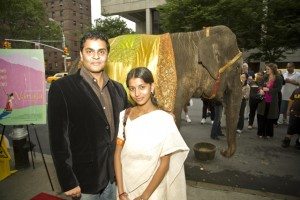 [dropcap]H[/dropcap]ow does an IIT-B graduate end up making the surprise hit indie movie of the year? ‘Vanaja’ which was Rajnesh Domalpalli’s thesis film at film school at Columbia University, went on to win the Best Debut at the 2007 Berlin International Film Festival and was selected in over 114 Film Festivals in 49 countries, bagging 24 international awards!
[dropcap]H[/dropcap]ow does an IIT-B graduate end up making the surprise hit indie movie of the year? ‘Vanaja’ which was Rajnesh Domalpalli’s thesis film at film school at Columbia University, went on to win the Best Debut at the 2007 Berlin International Film Festival and was selected in over 114 Film Festivals in 49 countries, bagging 24 international awards!
Domalpalli, who is from Hyderabad, spent his growing up years in small rural towns where his father worked as a civil engineer for the Andhra government. After completing his B. Tech in EE from the IIT Mumbai in 1984 and an MS from SUNY, SB he worked as a computer engineer in California’s Silicon Valley before graduating with an MFA in 2006 from Columbia University.
Film and engineering seem a world apart but according to Domalpalli his education at IIT gave him skills such as problem solving and evaluating choices. “I chose risk. In giving me a logical way of thinking, IIT engendered a confidence that enables you to take risks, and filmmaking – especially art house filmmaking – is enormous risk.”
He also used his computer skills from IIT to his new profession of film-making which is increasingly going digital. He says, “So what better use of my old IIT skills then to make films about matters that I care about?”
Text@ Lavina Melwani.
BEHERUZ SETHNA: GEORGIA’S RISK TAKER
[dropcap]B[/dropcap]eheruz N. Sethna is the Bombay IITian who almost wasn’t! He’s one of those rare people who got admitted into IIT-B but actually turned it down – until his father intervened. Sethna, Professor of Business, is the President of the University of West Georgia, which has approximately11, 000 students and a $100 million plus budget. He is the first known India-born person ever to become President of a U.S. University.
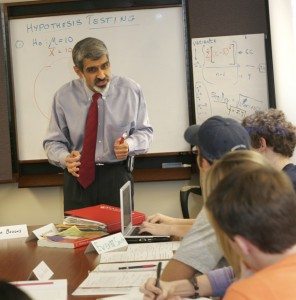 Sethna grew up in Bombay in a family of modest means. His father, who had been in the Air Force earlier, worked all his life in a cotton export company, where he rarely made more than Rs. 500 a month.
Sethna grew up in Bombay in a family of modest means. His father, who had been in the Air Force earlier, worked all his life in a cotton export company, where he rarely made more than Rs. 500 a month.
“My parents did not have much money but they managed to make it go a long way – my mother told me at an early age that they were going to put every penny they had into my education. I even wore hand-me-downs when I first went to school,” recalls Sethna.
“My father had big dreams for me and had clipped information about IIT entrance exams and showed that to me often, even four years before I was eligible for it. It took some confidence and stretch on his part and he infected me with it.”
Sethna, who today himself has thousands of students under his care, believes everything he is due to his parents and their push for him to excel. After graduating from IIT Bombay in electrical engineering, he did his PhD at Columbia University. Interestingly his PhD was in marketing and he used an electrical engineering model to understand human behavior, and so his IIT training proved useful.
More than that, he feels IIT taught him much more than engineering. “It gave me work habits that are absolutely unbeatable. I learned how to work really hard – night after night, often with just two hours sleep. I learned in the 60’s what has today become fashionably known as the power nap – I developed this strategy for myself and I can do that even today– sleep for 5 to 10 minutes at a time and then literally work for hours longer.”
While there is innovation and risk taking in entrepreneurship, does he believe that these qualities apply to academia too?
“Risk taking is absolutely critical otherwise you’d never move, you’d never change,” says Sethna, who is now starting his fifteenth year as president. In that period the student population has risen to 11,000 and the university has become known nationally. He started an advanced academy for admitting talented high school students into university two years earlier, at the age of 16. There are only ten such initiatives in the whole of the US.
 “It has helped grow the reputation of the institution tremendously but this was a risky move because our budget is well over $100 million and there are lots of decisions to be made, both in good times as to where to invest, and in tough times where to cut,” he says.
“It has helped grow the reputation of the institution tremendously but this was a risky move because our budget is well over $100 million and there are lots of decisions to be made, both in good times as to where to invest, and in tough times where to cut,” he says.
Sethna has often had to take stands professionally which have not gone down well in the conservative section of rural Georgia, on issues relating to homosexuality or the Bible. He says, “I take very strong stands on issues about freedom of speech and academic freedom – and these are extremely risky moves.”
Being president, the buck does stop with him, and some decisions are very unpopular ones – such as when he changed the name of the team mascot from the Braves to the Wolves, because it was offensive to Native Americans. Almost 99.5 percent of the general public was against the name change but Sethna got the community involved and engineered the change. He is probably the only university president who changed the name of a team mascot – and got away with it!
As university president, he’s also had to do what presidents of major corporations have to do – spearhead almost a quarter of a billion dollars worth of investment. He says, “You make an investment for the good of the organization which has significant monetary and reputational risk associated with it and you do that on the grounds of your belief in the growth path of your institution.”
Sethna has also started doctoral programs for the first time, and initiated some powerful fundraising where endowments to the university have increased by 800 percent. “There is risk – and risk of failure; when you fail, you dust it off and keep going,” he says. “Don’t fire off in 50 different directions but be focused. If you don’t even try, then there’s a zero probability of success.”
Text ©Lavina Melwani (This article was first published in Namaskar, the Air India magazine and in Khabar magazine)
PEOPLE POWER
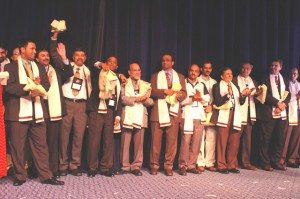 [dropcap]“I[/dropcap] grew the most at IIT by understanding how different people thought and solved problems – 90 percent of your learning and development actually took place outside the classroom. The greatest thing they did was they put all those great young minds together for five years, they lived together, played together, solved problems together – that was the beauty of it.
[dropcap]“I[/dropcap] grew the most at IIT by understanding how different people thought and solved problems – 90 percent of your learning and development actually took place outside the classroom. The greatest thing they did was they put all those great young minds together for five years, they lived together, played together, solved problems together – that was the beauty of it.
Everyone coming to IIT thought ‘Jeez, I’m God’s gift to mankind!’ – they were always the best in their school. Suddenly they saw that every single person coming there was the best in his school! That was something which brought you down to earth very quickly. So, most of the people you’ll find are very well grounded because of that.
You got to appreciate there are different kinds of talents. For me the biggest learning was how to learn through others. To this day, I am absolutely fascinated that I can actually learn something from anybody in the world – I enjoy that very much.”
– Bharat Desai, Chairman and CEO, Syntel.

2 Comments
Hi Shrey,
Yes, you’re right. I just heard about this and in fact I hope to do a feature on him in the near future. Indian-Americans are really doing well in the academic field.
Nitin Nohria, An India-born professor and IIT alumnus who has long championed a pledge for organizational leaders and managers on the lines of the Hippocratic Oath for doctors to enhance accountability in the corporate world has been named Dean of the prestigious Harvard Business School.